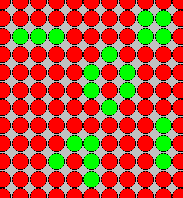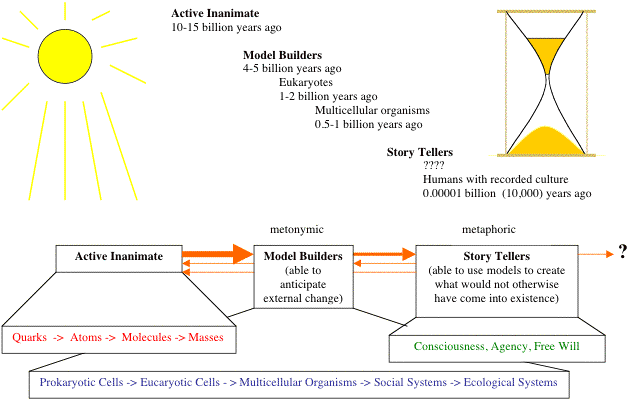

Emergence
Biology 361 = Computer Science 361
Bryn Mawr College
Spring 2006



| 
|
EmergenceBiology 361 = Computer Science 361
| 
| 
|
From introduction
From Doug and course blog
From From the Head to the Heart ...
| science itself will teach man... that he himself is something of the nature of a piano-key or the stop of an organ... so that everything he does is not done by his willing it, but is done of itself, by the laws of nature....even if this were proved to him by natural science and mathematics, even then he would not become reasonable, but would purposely do something perverse out of simple ingratitude, simply to gain his point.... the whole work of man really seems to consist in nothing but proving to himself every minute that he is a man and not a piano-key! .... Fyodor Dotoevsky, Notes From Underground, 1864 |
A Schema for Emergence as a BIG Idea
(from Emerging Emergence, A Report on Progress (Oct 2004)

|
Both conductors and planners/architects are themselves products of on ongoing process of emergence. So too is the brain, meaning, purpose, science, and inquiry itself.
All are (non-deterministically?) derivitive of properties and interactions that existed at earlier stages of emergence and that persist at lower levels of organization. Having come into existence, each becomes both an influence on lower levels of organization and an ingredient for the creation of new levels. |
Trying Out Unpeeling the Onion: The Meanings of "Purpose"
|
Thanks, all, for rich conversation ... and apologies for not getting the timing quite right, building toward some things without leaving time to wrap them fully. It was in fact part and parcel of the rich conversation, with several issues becoming clearer in my mind as we talked through them. Here, in any case, is the bottom line, as it emerged .... The diversity of things that come together in/around the topic of emergence might in principle be related in three somewhat different ways
Among the things that appeals to me personally about the third possibility is the implication that things we observe (in general) are not the way they are because of meaning/purpose/director OR inevitability (except, perhaps, for a little fiddling in recent time) but rather are expressions of an ongoing exploration of possibilities (of which we are a part). And that in turn justifies (for me at least) my suggestion with the models that one first observe them and tell stories about them. Yes, tell stories, and THEN look inside the models and use what one finds there to test/revise stories, conceive new possibilities. Also interesting/not anticipated quite was the importance of recognizing that much of human behavior is, like that of other animals and of computer models, not the result of "thinking" or "intending". Yes, I triggered our collective rhythmic clapping but had no idea what the frequncy would be; that "emerged" as the result of a distributed organization with no conductor. I mentioned as another example Traffic Jams, which in addition will give you another taste of NetLogo. This raises an interesting question about "thinking" itself. Clearly "surprising" things can be created without "thinking". So what is "thinking" for? To prevent "surprise"? Or, perhaps, to create additional "surprising" things, things that would not otherwise have come into existence without thinking, perhaps even "surprising" to the thinker? |